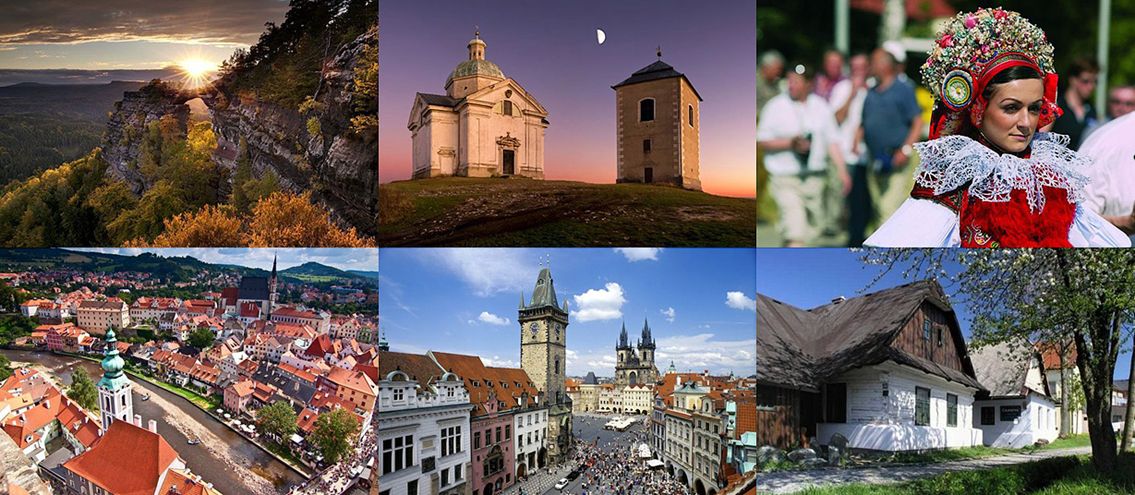Czech Republic
| Capital city | Prague |
|---|---|
| Population | 10.6 million |
| Total area | 78.866 km² (30.450 sq mi) |
| The highest point | Sněžka at 1.603 m (5.260 ft) |
| Government | Parliamentary republic (President: Miloš Zeman) |
| Official language | Czech |
The Czech Republic is a landlocked country in Central Europe. It is a member of the European Union. Since January 1, 1993 it has been an independent state, previously it was part of Czechoslovakia. The territory of the Czech Republic consists of three historical lands – Bohemia, Moravia and Silesia.
For centuries, Czech culture has been an integral part of European culture. Urban and rural architecture, enhanced by works of art, has not escaped the attention of UNESCO – allowing the Czech Republic to boast twelve listed World Heritage Sites, as well as five traditions of a folklore and hunting nature inscribed on the Intangible Cultural Heritage List.
The number of foreign visitors to the Czech Republic has been increasing sharply over the last several years. Many come back after their first visit, to enjoy together with others all that the Czech Republic has to offer. The main advantage of the Czech Republic is the wealth, diversity and accessibility of cultural, historical and natural places of interest, all concentrated in a relatively small space that boasts very serviceable standards of accommodation and dining facilities.
Very famous is the so-called “Bath Triangle” which consists of the world-famous spas – Karlovy Vary, Mariánské Lázně and Františkovy Lázně. These spas were visited by famous people such as J. W. Goethe, A. Dvořák, J. S. Bach, W. A. Mozart as well as many others.
For more information about the Czech culture go to www.czechtourism.com.
